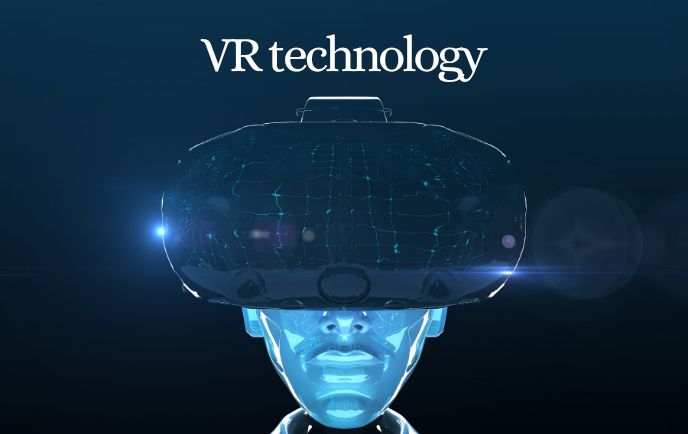As time goes by technology only proves its indispensability in human life. Whether it’s in homes, factories, or in the corporate realm, technology is key to getting things done. When we talk about technology, we mean different technologies like AR (augmented reality), mixed reality, and virtual reality (VR) among others.
These technologies have proven to be reliable and effective when it comes to reinforcing agility in all dimensions of life, including the education realm. Technologies like VR are considered immersive learning platforms because of the capabilities associated with them.
With the help of VR technology, educators can alter the learning environment and help learners understand academic concepts easily. VR technology is currently helping students enter realms that were once considered impossible. Also, with VR, physical limitations are no longer a major problem today as learners can enter spaces that are impenetrable in real life or would be difficult to reach in real time. But what is virtual reality technology?
Also Read: How Machine Learning Services Will Reshape Enterprise Technology?
Virtual Reality- Definition
Virtual reality is a type of technology that offers a 360-degree view of things in a digital environment. The technology generally allows users to explore and interact with a digital version of the learning material.
For this to happen, users require devices like goggles to interact with the new environment. Leveraging VR in a classroom helps educators to create visually stimulating learning experiences for students.
Also, within the education landscape, VR technology is used to inspire and motivate learners. That’s because VR is innovative, immersive, and interactive which helps to foster meaningful learning experiences.
A report by The App Solutions indicates that 93% of educators assert that using VR in a classroom increases interest and excitement in learners. Moreover, VR in the global education market is anticipated to reach $32.94 billion by 2026 at a 39.7% CAGR. Findings also indicate that VR adoption in the education landscape is expected to increase due to its capabilities. So, what are some of the most convincing reasons for more educators to embrace VR technology?
5 Reasons for Educators to Invest in VR Technology
Increases Student Engagement
In education, student engagement is key to academic success. Precisely, student engagement refers to the degree to which a learner is immersed in the lesson. Student engagement is generally a combination of attention, curiosity, and interest in what is being taught.
It should be noted that student engagement goes beyond student participation. Not all participating students are fully engaged in a lesson.
Tapping into the power of VR allows educators to cultivate curiosity in learners which increases their attention span and cognitive flexibility. Besides that, it allows them to digest information easily.
Additionally, it breaks the monotony of the traditional mediums of learning. Students don’t need to depend on textbooks, but, can leverage virtual material to comprehend material better. That’s because VR solutions allow learners to experience things as though present in that realm. This cultivates learning interest and also ups their engagement.
Offers Immersive Learning Experiences
Anything that presents things in a unique way is worth our attention! Over the years, educators and trainers have discovered the importance of immersive learning. This is precisely a medium of learning that is experiential and visual in nature.
Immersive learning experiences generally offer an opportunity for learners to enter and visualize the material. For example, virtual field trips help students travel to places they only dreamt of; for example outer space or to move back in time to understand what life was like in ancient times.
VR technology also allows learners to conduct experiments and surgeries in the science field. This improves skills and academic performance. Apart from VR, educators can also leverage gamification and STEM learning apps to improve student engagement and learning outcomes.
Enhances Digital Literacy
High-end technologies like VR, AR, and mixed reality conform to the needs of the modern world. With the fact that technology is influencing every sphere of life, leveraging VR in a classroom can help improve digital prowess.
Depending on the lesson needs, VR technology allows learners to get acquainted with advanced technologies. This not only helps them enjoy lessons but also offers a competitive advantage to them.
Currently, remote or distance learning is prevalent and that isn’t about to change. However, it’s through digital skillsets that students enjoy remote learning. Using VR apps, computers, and virtual assistants enables students to understand how the modern world works.
With that, an innovative educator should think of introducing VR in a classroom, not only to power learning experiences but to help learners understand the latest developments.
Also Read: How Web3 in IoT will Bring Digital Transformation
Enhances Knowledge Retention
Commonly, students learn through visualizing material. This plays an excellent role in improving knowledge retention. Virtual reality use in a classroom caters to interactive learning something which improves imagination, creativity, and engagement.
Virtual reality makes things real when compared to traditional instruction mediums. Students only had to read about ancient places and imagine the events of WWI or areas that they couldn’t enter in real time.
However, VR is now among the best active learning strategies that educators can use to help students understand intricate concepts. Whether it’s a biology lesson, history, or engineering, VR serves an incredible role in helping students visualize and digest the learning material.
Caters to Students’ Needs with Learning Disabilities
To make a classroom all-inclusive, technologies like VR and mixed reality are making a huge difference. Virtual reality offers a chance to students with disabilities like Autism Spectrum disorder and limited mobility to learn like other students.
That’s because VR material helps them to process material faster and attain better insights to supplement an educator’s instructions. Educators can also design VR lesson plans and learning material in a personalized to cater to learners’ specific needs. This with time, motivates students to learn and bridges the gap between learners effectively.
Bottom Line
VR technology is powering learning and teaching in many ways. Unlike traditional teaching mediums that focus on dictating notes to students, VR alters learning environments innovatively. It allows students to enter simulated environments where they experience things as though present in that realm.
VR has a wide application in the education field and there is a lot that educators can benefit from it. Additionally, the technology is also used in training centers where students get the chance to perform experiments and practicals in a computer-based simulated environment.

Jessica Robinson loves to write interesting and knowledgeable blogs regarding business management, education and life to satiate the curiosity of her lovely readers. Currently, she is serving as a content manager at the ‘Speaking Polymath’. Every piece of content that she writes demonstrates her immense love and passion for her profession

